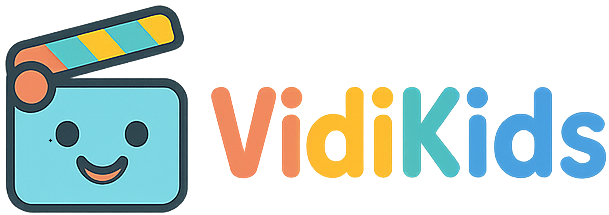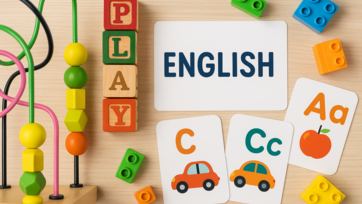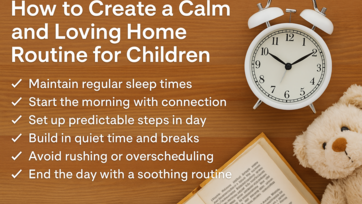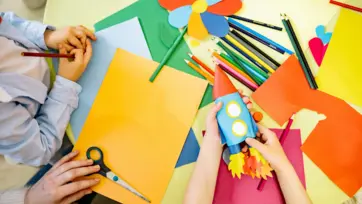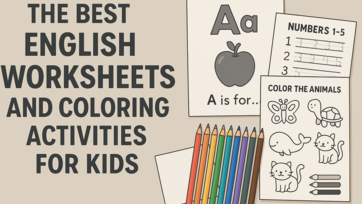hildren ready to explore English find their greatest motivation in simple, engaging stories that connect with their world. A carefully chosen beginner’s book can build vocabulary, inspire confidence, and create joyful moments shared with an adult. In this article, we’ll explore the best types of books for children just beginning their English journey, along with tips on how to use them effectively.

Why Start with Beginner Books?
For early learners, seeing English in context is crucial. Beginner books present short sentences, repetitive phrases, and engaging illustrations—key features that support language acquisition. When children recognize patterns and images that match the words they hear, they begin to decode language naturally. This builds confidence and encourages them to explore further.
What Makes a Good Beginner Book?
-
Simple language: Sentences of 3–6 words, repeated often
-
Strong visuals: Pictures that clearly match the text
-
Repetition: Phrases or words that reappear throughout
-
Rhythm or rhyme: Helps internalize language patterns
-
Relatable content: Everyday themes—animals, food, family, routines
Recommended Beginner Books
1. **“Brown Bear, Brown Bear, What Do You See?” by Bill Martin Jr. and Eric Carle
A classic favorite for good reason. Each page introduces a new animal with the repeated question:
“Brown Bear, Brown Bear, what do you see?”
Followed by: “I see a red bird looking at me.”
Why it works:
-
Repetitive structure builds predictability
-
Color and animal vocabulary introduced naturally
-
Illustrations are bold, clear, and iconic
2. **“Dear Zoo” by Rod Campbell
A lift-the-flap favorite. The child writes to the zoo asking for a pet. Each flap hides a new animal—from the wrong one (too big, too tall) until the perfect fit arrives.
Why it works:
-
Interactive flaps hold children’s attention
-
Introduces adjectives (big, tall, fierce) and nouns
-
Encourages question-answer structure
3. **“Spot” series by Eric Hill
Short, engaging stories about Spot the dog. Each book is around 16 pages, with very simple sentences and clear illustrations.
Why it works:
-
Consistent, predictable language
-
Familiar setting and character help comprehension
-
Great for repeated reading
4. **“The Very Hungry Caterpillar” by Eric Carle
A charming tale that tracks a caterpillar’s growth into a butterfly. Simple text, counting, days of the week, and food items all come into play.
Why it works:
-
Teaches sequencing and numbers
-
Rhythm builds language familiarity
-
Scenes progress logically, aiding understanding
5. **“First 100 Words” board books by Roger Priddy (or similar)
These books present basic vocabulary across categories like animals, colors, and home items, with one word per page and a clear image.
Why it works:
-
Focused on core vocabulary
-
Supports picture-word associations
-
Durable format ideal for toddlers
How to Make the Most of Each Reading Session
1. Preview and Predict
Before reading a page, look at the image and ask, “What do you think it says?” This boosts engagement and active thinking.
2. Use Repetition
Read the same book for several days in a row. Repetition helps children internalize words and phrases naturally.
3. Point and Say
Run your finger under each word as you read. This helps children connect spoken and written forms.
4. Act It Out
Turn the story into a mini-play. Let your child pretend to be Brown Bear, Spot, or the hungry caterpillar — adding gestures reinforces meaning.
5. Ask Questions
Keep questions simple:
-
“What does Spot see?”
-
“What did the caterpillar eat?”
These encourage comprehension and speaking.
6. Add Extensions
After reading, invite your child to:
-
Draw a scene from the story
-
Sort toy animals that appeared in the book
-
Retell the story in their own words
These activities deepen understanding and extend learning.
Choosing Books at the Right Level
-
If your child needs help after every word, it’s too hard.
-
If they finish without pausing, try a slightly more challenging book.
-
The goal is “just right”—a book that’s understandable with occasional support.
Digital vs. Print
-
Print books help children see and hold the story—great for pre-readers.
-
Interactive digital books can add audio narration, highlighting, and animation. Use these sparingly, ensuring the adult still reads aloud and discusses the content.
Where to Find Beginner English Books
-
Local libraries often have bilingual or ESL beginner sections.
-
Affordable options on second-hand platforms (e.g., used bookstores).
-
Educational publishers offer durable board books and leveled readers.
-
PDFs or audio-readers from reputable educational websites can supplement print materials.
How Adults Can Support Reading
-
Read regularly — even 10 minutes daily builds habit.
-
Use expressive voice — excitement in your tone keeps kids hooked.
-
Celebrate small wins — praising them for their attempts boosts confidence.
-
Follow their interests — if they love cars, find a book about cars.
-
Be patient — understanding grows slowly; avoid rushing.
Final Thoughts
Choosing the right beginner English books is just the start. Reading becomes a powerful tool when paired with interactive storytelling, playful activities, and consistent encouragement. Books like Brown Bear, Dear Zoo, Spot, and The Very Hungry Caterpillar offer simple, predictable text that supports vocabulary and grammar naturally.
By integrating reading into daily life, making it engaging, and celebrating every small success, children develop a love for English. With time, repetition, and thoughtful interaction, what began as a simple story becomes the cornerstone of confident language learning.
This approach is low-cost but high-impact—perfect for home, preschool, or any environment where children first meet English.
; ?>